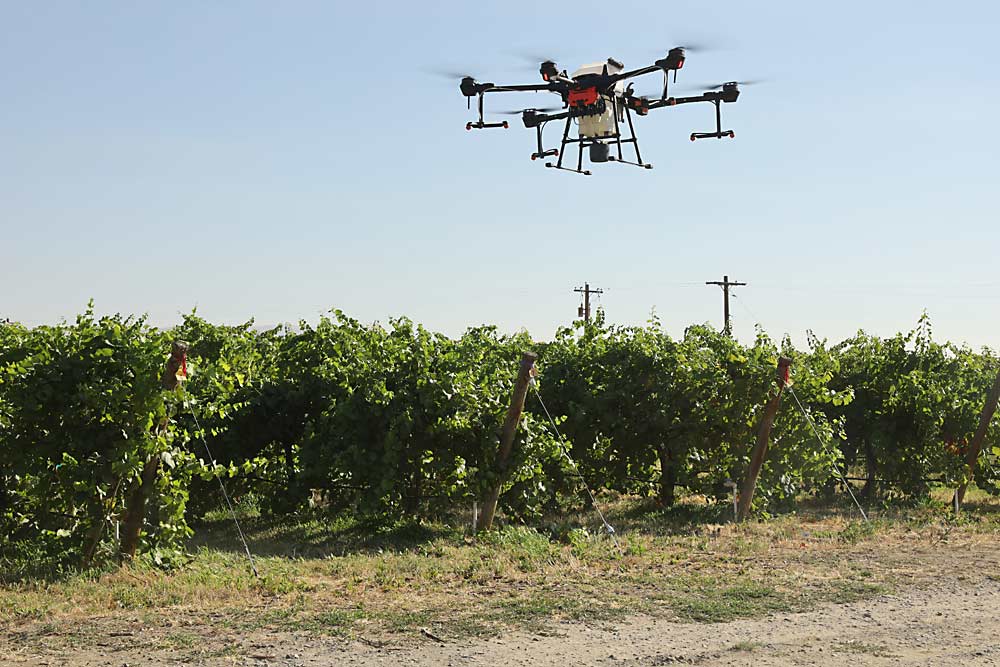
The Washington State Grape Society and Washington State University hosted a field day Aug. 11 focused on WSU’s vineyard technology research, especially in the arena of spray technology.
WSU graduate students shared their findings on two very different types of pest control: engineering better application techniques for traditional chemistries and alternative spray approaches that would eliminate residues.
In the former arena, Jake Schrader shared his experience trying to develop a system to apply heated horticultural oil to enhance its pest control properties and to use ozone for mildew and mealybug control. The challenge with both is that in field conditions, the droplets are unable to pack the promised punch by the time they reach the leaves. The ozone loses its concentration almost immediately, and the heated droplets cool quickly.
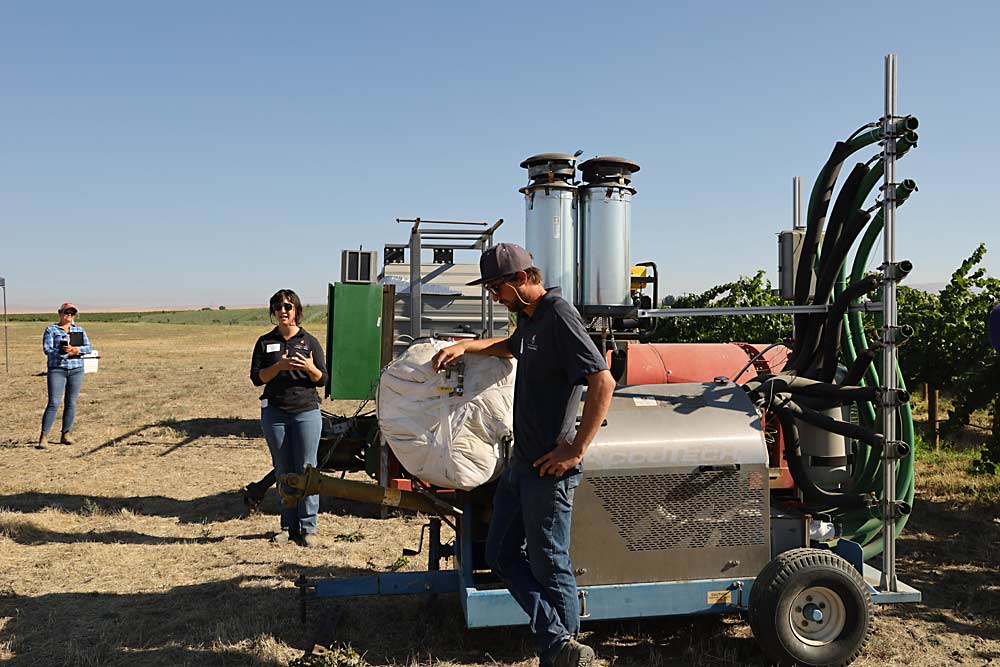
Another alternative that’s showing more promise is ultraviolet light therapy. By pulling a box filled with high-intensity UV light bulbs over vine rows in the dark of night — when powdery mildew can’t repair the cellular damage from light exposure — researchers can deliver meaningful control, said Lexie McDaniel. Now, they are trying to figure out how growers could best implement it.
“Every three days is probably the ticket for controlling mildew, but that runs into labor issues,” she said, in comparison to much longer intervals for traditional fungicides. “It’s promising, but needs more integration.”
On the more traditional chemistry front, Ramesh Sahni shared how WSU is working with precision spray technology to help airblast sprayers adjust output in response to canopy size. The commercially available technology from Smart Guided Systems can help vineyards apply over 40 percent less in chemicals while achieving the same level of biological control and less off-target drift, he said.
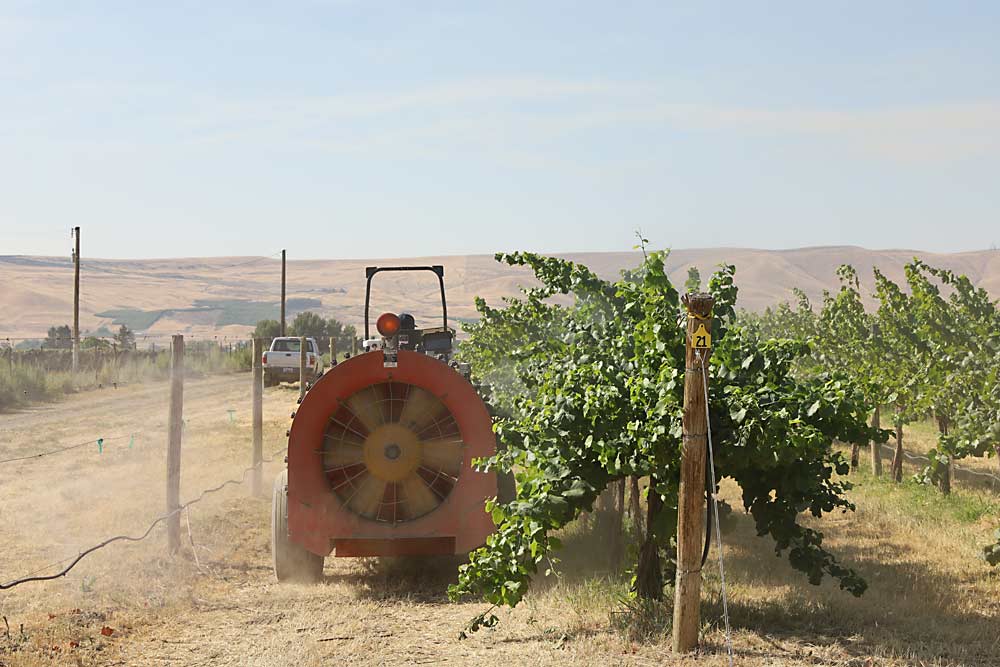
Lastly, biological systems engineer Lav Khot introduced the group to WSU’s new spray drone. The technology was developed with row crops in mind, he said, and doesn’t have the flying time or payload to do full field applications. However, he’s trying to see how it might have precision application possibilities in vineyards, such as spraying edge rows for mites or targeted nutrient and beneficial insect applications.
Beetle update
The field day also offered an opportunity for Camilo Acosta of the Washington State Department of Agriculture to update Yakima Valley grape growers about the state’s efforts to eradicate Japanese beetles, which were first detected in Grandview in 2020 and then trapped in alarming numbers in that local area last year.
The good news for grape growers is that Japanese beetles don’t like grape berries, however the grape leaves are one of over 200 potential hosts. That’s an important distinction, because as the state prepares to enact a quarantine that would prevent movement of the beetles from the infested area, it won’t impact the transport of harvested grapes. Corn, hops and yard waste, however, will be subject to transport restrictions, such as WSDA trapping or on-site treatment, during the adult beetle’s active season, from May to October, Acosta said. Meanwhile, potted plants, compost and topsoil pose a concern all year long.
The invasive pest is primarily being trapped in residential areas, where the state treated over 1,000 acres of lawns earlier this year. Acosta said that’s a good start, but his team has only been able to reach about half of the homeowners in the impacted area targeted for the control program.
The bad news is that a homeowner in Wapato, about 30 miles from the known infestation, reported finding the beetles in his backyard grapes in late July. Traps set there had caught over 70 beetles as of the first week of August, Acosta said. Another detection in the opposite direction, in Richland, has not resulted in any additional catch.
Those findings show how important the quarantine is to prevent hitchhiking. “It didn’t fly to Wapato, it didn’t fly to Richland,” Acosta said.
Despite that spread, he’s optimistic about the state’s plan of attack.
“Even though we’ve found these beetles in Wapato, we’re still in eradication mode,” he said.
—by Kate Prengaman

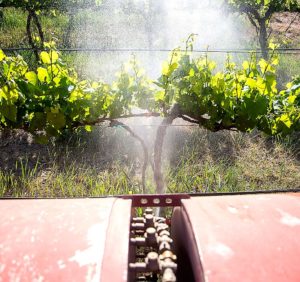
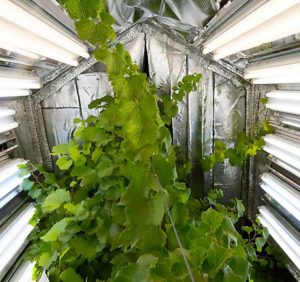
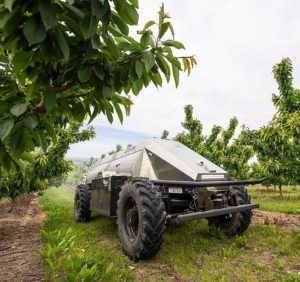
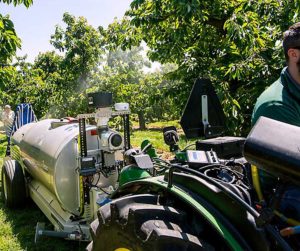
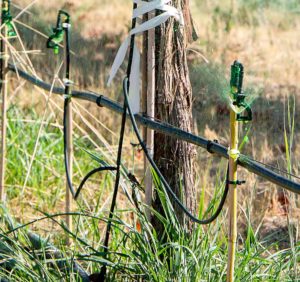
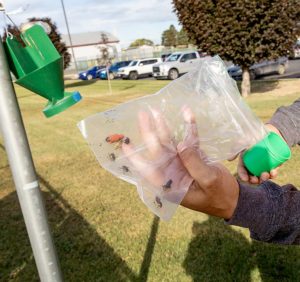





Leave A Comment